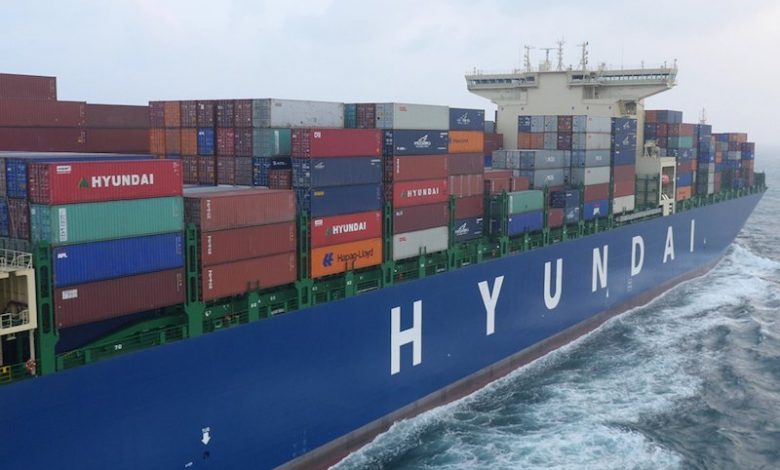Seoul rallies to push HMM up the rankings with massive buying blitz

The South Korean government will do all it can to push Hyundai Merchant Marine (HMM) up the container rankings – even willing to help finance up to 20 new 13,000 teu ships, Splash has learnt.
With Hanjin Shipping going bankrupt at the end of August, Seoul has now decided to throw its lot behind HMM and make it a true flag carrier for the nation. HMM, which spent much of this year going through a painful restructuring, was expected to pick up the best assets of compatriot Hanjin’s fleet, but as exclusively reported last week on this site, Maersk and MSC have taken nine Hanjin neopanamaxes on charter in a deal mapped out with Germany’s HSH Nordbank.
HMM, which has signed an MoU with Maersk and MSC to join their vessel sharing agreement 2M, is still by no means guaranteed entry to the alliance – thus it needs more heft as a bargaining chip.
As it stands, HMM is the world’s 13th largest containerline – a perilous position in a sector consolidating fast. Positions 11, 12 and 15 in the global container rankings, for instance, all Japanese, announced a merger of their container divisions on Monday, the latest in a 2016’s dramatic wave of container consolidation.
South Korea will make funds available from a new shipping fund, Korea Ship Co, to HMM. An order for ultra-large containerships by HMM is now viewed as likely before year-end.
Moreover, having lost out on some of the best ships in the Hanjin fleet last week, Korean authorities have moved to ensure HMM gets the next slice of the Hanjin fleet. HMM is taking on 11 ships Hanjin is returning to state lender Korea Development Bank. The ships had been on bareboat charter. Splash understands of the 11 vessels set to join HMM ranks, two are containerships and nine are bulkers.
Commenting on today’s news, Lars Jensen from SeaIntelligence Consulting told Splash: “With the recent developments, we are now at a point where a carrier needs a fleet in excess of 1m teu to have a scale matching the major global competitors. Mid-sized global carriers therefore need to closely analyse where their future strengths are. If they want to compete on scale, the bar is now set very high and can realisticaly only be acheived through mergers if a carrier is not already in the club. The alternative is to become a niche carrier, but that requires reduction and specialisation in the fleet, not expansion.”
Finally, in today’s roundup of Hanjin/HMM related news, South Korea’s president, Park Geun-hye, has carried out a cabinet reshuffle which could help out the lines. As well as announcing a new prime minister, Park tapped Financial Services Commission chairman Yim Jong-yong as the nation’s new finance minister. Yim was one of the central characters in getting HMM’s complex, painful restructuring passed earlier this year.

It is difficult to relate to Korea’s seeming addiction to maintaining a global container line, when other nations such as US, Russia, Brazil and UK (to name a few) do not see the same relevance.
It would appear that they are about to increase their operated fleet size by roughly 80%, in a highly uncertain and highly competitive environment. Without offering ridiculously low prices, and therefore minimising profits, I wonder what the differentiating strategy might be which will increase market-share accordingly?
Adding more debt to a highly geared company will never be a panacea, and if this company is to be longer term sustainable then it needs a greatly improved business model, and a very different leadership skill-set. Otherwise I fear it will simply burn the “subsidies” being provided.
Andy, for me it´s quite simple:
If you see, how many Korean cargoes where trapped on HJS vessels during the first weeks of the bankcruptcy, you may understand, why the government wants a strong Korean fleet.
In other words: The Korean government is subsidising the Korean fleet to enable her to run at unprofitable freightrates on the major trades thus enabling the Korean industry to sell their product overseas at cheaper rates. The side effect is a newbuilding program that will help the ailing Korean shipyards for a while.
At the end the Korean taxpayer will get the bill.
If the Chinese do that, everyone is shouting “foul play”….